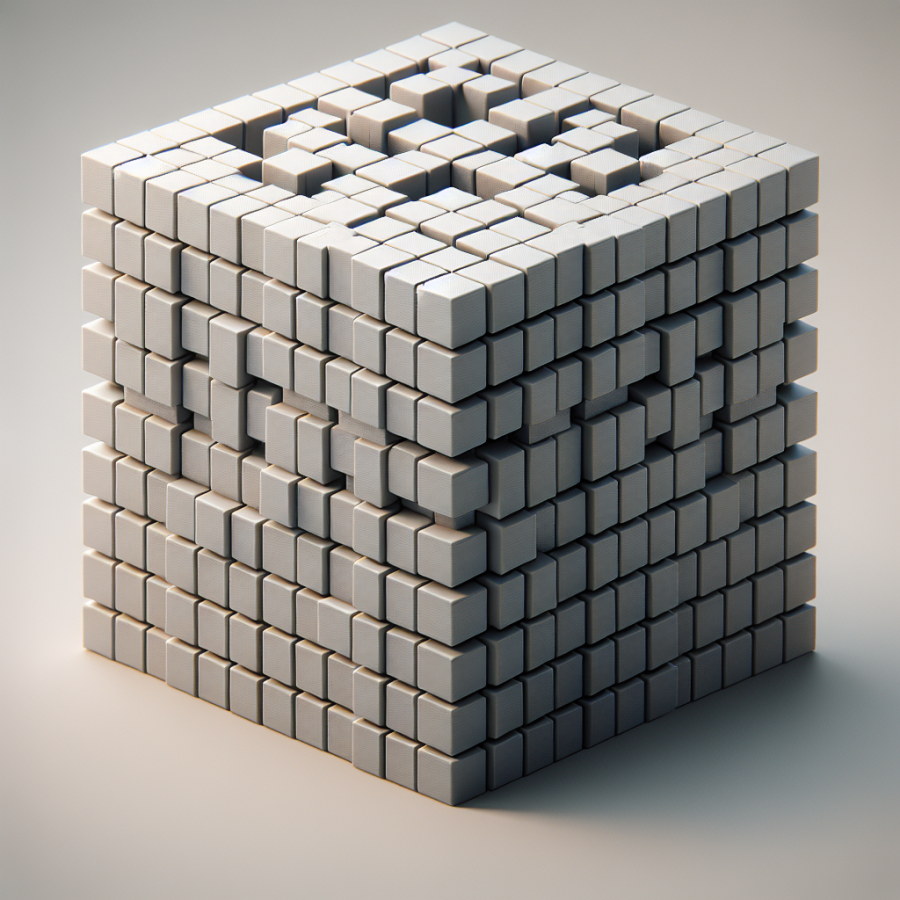Unlocking the Secrets of the 5x5x5 Cube: Tips and Techniques for Speedcubing Success
The allure of the 5x5x5 cube, commonly known as the Professor’s Cube, lies in its challenging complexity, a step above its younger sibling, the 3x3x3 Rubik's Cube. Speedcubing this puzzle requires not only a deep understanding of the cube’s mechanics but also a mastery of specialized techniques.
One fundamental aspect of solving the 5x5x5 cube efficiently is the reduction method. This strategy involves breaking down the complex cube into more manageable parts. Start by forming the center pieces. Centers are the static, non-moving components in a standard 3x3x3 cube, but on a 5x5x5, they need to be assembled. The key is to create a single solid color in the center of each face. Use algorithms that specifically manipulate edge pieces to do this without disturbing the other centers you've already completed.
Once centers are complete, the next step is to pair the edge pieces. In a 5x5x5 cube, there are three edge pieces for each color combination. The goal here is to pair these edges so they can be treated as a single edge piece, similar to those on a 3x3x3 cube. Expert cubers use the technique called 'freestyle' edge pairing, which allows them to simultaneously work on pairing multiple edges more efficiently. This technique requires a high level of spatial awareness and the ability to foresee several moves ahead.
After reducing the 5x5x5 to a simpler state with solved centers and paired edges, you switch to the familiar 3x3x3 solving methods. This is the stage where your experience with the smaller cubes really shines. Use the Fridrich method or your preferred 3x3x3 solution strategy to complete the cube. By now, the only difference you'll encounter is the need to solve the parity errors unique to larger cubes. Parity occurs because unlike the 3x3x3 cube, the 5x5x5 has an even number of identical pieces that can be swapped without affecting the overall puzzle's solvability. Learning specific parity algorithms is essential to handle these situations efficiently.
One tip for continuous improvement is the practice of finger tricks and the seamless integration of algorithms into muscle memory. The less you need to think about each turn, the quicker your solve times will become.
Read also:
Where to Stream 'The Basketball Diaries': A Guide
Mastering the Intricacies of the 5x5x5 Cube: Advanced Strategies for Solving
Solving a 5x5x5 cube, often referred to as the Professor's Cube, is a challenge that requires deeper understanding and advanced strategies beyond what a 3x3x3 Rubik's Cube or even a 4x4x4 cube can teach you. The extra layers add complexity, not only in terms of the number of pieces but also the types of moves and algorithms you need to master.
Before delving into the core strategies for solving the 5x5x5 cube, it's essential to have a grasp of the cube's basic anatomy. The cube features center pieces that dictate the color of each face, edge pieces that have two colors, and corner pieces with three colors. Notably, the 5x5x5 cube has fixed center pieces as opposed to the 3x3x3's single-center pieces and movable center pieces of the 4x4x4 cube.
One of the first advanced strategies you will encounter in solving the 5x5x5 cube is the reduction method. The goal here is to reduce the 5x5x5 cube to a state that can be solved like a 3x3x3 cube. This involves grouping the edge pieces and the center pieces. Comprehending and executing the algorithms to pair the "wing" edges is crucial, as is knowing how to avoid parity error issues that can arise when you have an odd number of edge pairs to swap.
The reduction method is typically broken down into several stages:
1. Solving the center pieces: Begin by solving the center pieces of any one face. This establishes a reference point from which you can then solve the centers of the remaining faces. Keep in mind that centers must be solved with the correct color orientation based on the cube's fixed center.
2. Edge Pairing: Once the centers are complete, the next stage involves pairing up edge pieces. This is done by matching the wing edges with their corresponding colors. Algorithms for edge pairing are more complex due to the cube’s size and the fact that you have to deal with potential parity issues.
3. Edge Sorting: After pairing, you need to sort these edges into their correct positions — akin to solving the edge pieces of a 3x3x3 cube — while also making sure that the colors of the edge piece pairs match the now-solved center pieces.
Advanced cubers also need to be familiar with the concept of parity.




